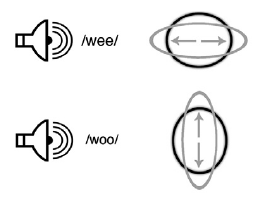The act of swearing or cursing seems to hold a lot of mysteries. Firstly, it is hypothesized that our human brain is actually hard-wired to do it (Pinker, 2007). Woah! Pinker further says that cursing is akin to the startled meow of cats whenever you step on their tails. What’s even more amazing is that there have been seen benefits of cursing, ranging from individual ones such as relieving emotional and physical pain (Stephens, Atkin, & Kingston, 2009) and large-scale benefits such as increased speaker persuasiveness and intensity (Scherer & Sagarin, 2006), among others. Such benefit has been exploited by advertisers and below are some cool examples of how cursing was used to drive up sales in a creative way:




Isn’t that amazing? Who would have known there would be many benefits to saying foul words?
Now researcher students from the University of the Philippines- Diliman Acoba, Lastimoza, Sayo and Velasco (2012) turned their attention on this strange phenomenon of cursing = increased persuasion. Since it was for a Perception class, they were especially curious on the effect of loud volume of cursing and its effect on persuasiveness. You see, it was found that increased volume of a message could translate to effectivity in persuading someone to agree with you (Packwood, 1974; Hall, Coats & LeBeau 2005; Van Iersel 2012). The researchers hypothesized that if we combine both qualities of a communicator (cursing and increased volume), it would also equate to increased persuasiveness. Pretty interesting, huh?! But how did the study turn out? We’ll find out soon.
Their study had 3 conditions: (1) control condition, where participants did not hear any curse word; (2) normal condition, where the volume of the curse word was the same as the volume of the rest of the words in the argument and (3) loud condition, where the volume of the curse word was significantly louder than the rest of the words in the argument. There were 98 participants randomly distributed among the 3 conditions. They then made them listen to a certain speech reflecting the 3 conditions as stated above, with the curse word inserted near the end of the whole speech. After that, they were asked to answer a 10 item Likert type scale measuring induced persuasiveness on behavioral, cognitive and affective dimensions. Using a one-way ANOVA, the results proved to be insignificant, with an F of 1.391. The researchers had to reject their hypothesis that the condition with loud cursing would induce a much higher persuasive effect than the other conditions.
The research was very interesting and it poses many implications in the applied setting. For one, we now know that a loud curse might not be as effective as we think it is, so we should avoid doing that, be it on a personal (like on speeches, pitches, etc) or large-scale (advertising, campaigns, etc) level. In fact, it might also be detrimental to a person or institution’s credibility, as hypothesized by the researchers (Acoba, et al, 2012).

This research teaches us that we should be careful next time we spout a curse word (a loud one at that!) as it might hurt both others’ personal perception of you and the idea or product you are selling. Moreover we could learnt that two things which elicit similar effects, if combined, might not be as effective as we would think it would be. How about that for a take-home point?
References
Acoba, J. B., Lastimoza, R., Sayo, L. E., Velasco, E. M., (2012). Effects of Cursing Volume in Persuasion. Unpublished manuscript.
Hall, J., Coats, E., & LeBeau, L. (2005). Nonverbal behavior and the vertical dimension of social relations: A meta-analysis. Psychological Bulletin, 131(6), 898-924.
Packwood, W. (1974). Loudness as a variable in persuasion. Journal of Counseling Psychology, 21(1),1-2.
Pinker, S. (2007). The stuff of thought: language as a window into human nature. New York: Viking.
Scherer, C., & Sagarin, B. (2006). Indecent influence: The positive effects of obscenity on persuasion. Social Influence, 1(2), 138-146.
Stephens, R., Atkins, J. & Kingston, A. (2009). Swearing as a response to pain. NeuroReport, 20, 1056-1060.
Van Iersel, B., (2012). Powerful agents: enhancing an artificial social agent’s persuasiveness by increasing its perceived social power. Eindhoven University of Technology, 1, 1-12.




















 Such findings reveal that there is a connection between cortical thickness and pain sensitivity, something we know little about today. It also highlights experience-related plasticity of the brain. Training such as zen meditation apparently affects brain morphometry and will thus have various impacts in the way we perceive the world. A take home point here I guess is that we are never too old to learn something new and that will change our brain. Our brain is truly a wonderful structure holds many mysteries just waiting for us psychologists and neuroscientists to unlock 🙂
Such findings reveal that there is a connection between cortical thickness and pain sensitivity, something we know little about today. It also highlights experience-related plasticity of the brain. Training such as zen meditation apparently affects brain morphometry and will thus have various impacts in the way we perceive the world. A take home point here I guess is that we are never too old to learn something new and that will change our brain. Our brain is truly a wonderful structure holds many mysteries just waiting for us psychologists and neuroscientists to unlock 🙂